http://www.odakyu.jp/english/deels/freepass/hakone/
Tokyo to Hakone

Hakone Area
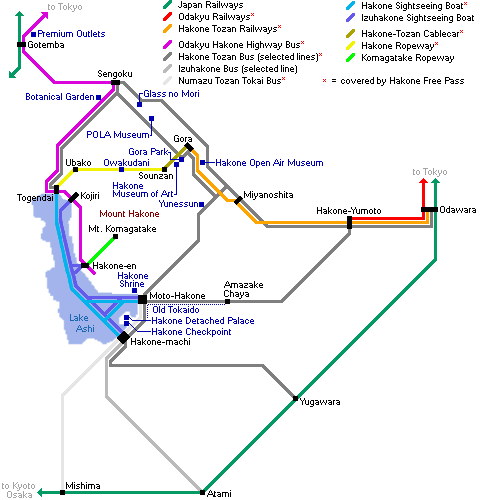
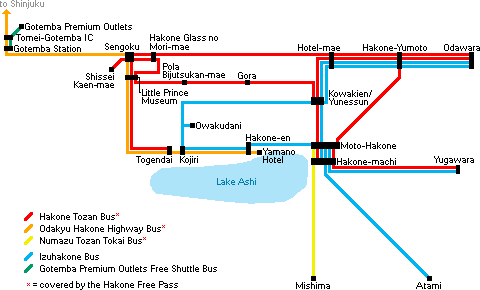
สถานี
CHOKOKU NO MORI (箱根彫刻の森)
1. The Hakone Open Air Museum (箱根彫刻の森美術館)
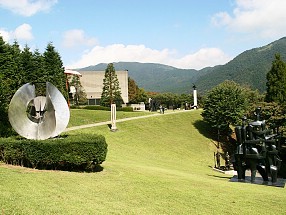 Hakone Open Air Museum successfully
attempts to create a harmonic balance of nature and art by exhibiting various
sculptures on its spacious grounds in combination with beautiful views of the
surrounding valley and mountains.
Hakone Open Air Museum successfully
attempts to create a harmonic balance of nature and art by exhibiting various
sculptures on its spacious grounds in combination with beautiful views of the
surrounding valley and mountains.
Besides the
sculptures, the Hakone Open Air Museum features various indoor galleries,
including a sizable Picasso Collection, consisting of paintings, prints,
sculptures and ceramic creations.
สถานี GORA (強羅)
2. Gora Park
(強羅公園, Gōra Kōen)
Gora Park is a western
style landscape park located on the steep slope above Gora Station. It is a
relaxing place to unwind and enjoy the scenery and views of Hakone. 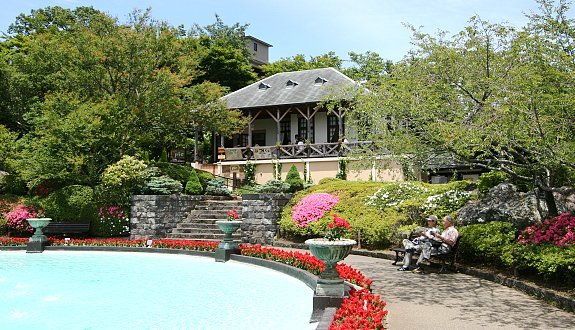 Gora
Park is primarily a French styled landscape park featuring a large fountain and
a rose garden. The park also has two greenhouses, one housing a tropical
botanical garden while the other contains a flower
garden. Additionally, there is a restaurant overlooking the main fountain, as
well as the Hakuun-do Chaen teahouse.
Gora
Park is primarily a French styled landscape park featuring a large fountain and
a rose garden. The park also has two greenhouses, one housing a tropical
botanical garden while the other contains a flower
garden. Additionally, there is a restaurant overlooking the main fountain, as
well as the Hakuun-do Chaen teahouse. In the Crafthouse visitors can take part in craft activities such as glass blowing, glass etching, pottery and dried flower arrangement. Activities range in cost from 1000 to 3500 yen and take from 30 minutes to an hour to complete
3. The Hakone Museum of Art (箱根美術館, Hakone Bijutsukan)
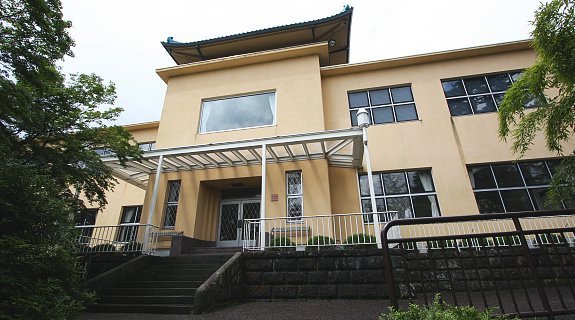
Hakone Museum of Art located in Gora, was founded by Okada Mokichi in 1952. The museum displays mainly Japanese ceramics from prehistoric time through the Edo Period (1600-1868). These include a number of large earthenware and ceramic vessels such as a haniwa burial statue classified as an Important Cultural Property.
Moss Garden : The museum also features
a pretty moss garden with stone
paths winding through the shade of its maple trees. The garden beautifully
reflects the seasons with brilliant autumn colours during November and vibrant greens
in spring. There is also a teahouse where green tea is served for a small fee.
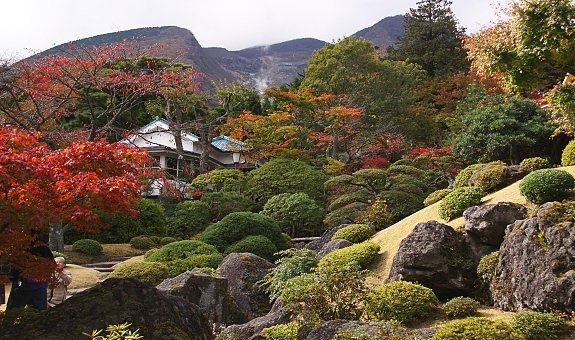 Sekirakuen Garden : Besides the moss garden, the museum
grounds additionally feature a Japanese landscape garden, the Sekirakuen Garden,
which is open only on weekends, national holidays and everyday during the month
of November. The garden spreads over the slopes of Gora, featuring large
decorative stones, a mountain stream and views over the valley and mountains.
Sekirakuen Garden : Besides the moss garden, the museum
grounds additionally feature a Japanese landscape garden, the Sekirakuen Garden,
which is open only on weekends, national holidays and everyday during the month
of November. The garden spreads over the slopes of Gora, featuring large
decorative stones, a mountain stream and views over the valley and mountains.
สถานี
OWAKUDANI (大涌谷)
4. Owakudani
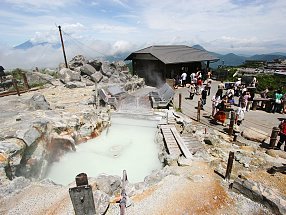 Owakudani is the area around a
crater created during the last eruption of Mount Hakone some 3000 years ago.
Today, much of the area is an active volcanic zone where sulfurous fumes, hot
springs and hot rivers can be experienced.
Owakudani is the area around a
crater created during the last eruption of Mount Hakone some 3000 years ago.
Today, much of the area is an active volcanic zone where sulfurous fumes, hot
springs and hot rivers can be experienced.
A short walking trail
(about ten minutes one way) leads from the ropeway station into the volcanic
zone to a number of steam vents and bubbling pools. Here you can purchase eggs,
cooked in the naturally hot water, whose shells are blackened by the sulfur and
which are said to prolong one's life by seven years.
About 30
minutes past the peak of Mount Kamiyama a trail splits off down towards Lake Ashi. It leads down the mountain and along the lakeshore, ending at
Kojiri not far from Togendai, from where the Hakone Ropeway connects back to
Owakudani. The round trip takes about 4.5 hours.
สถานี TOGENDIA-KO
5. Lake Ashinoko (芦ノ湖)
 Lake Ashinoko was formed in the caldera of Mount Hakone after the
volcano's last eruption 3000 years ago. Today, the lake with Mount Fuji in the background is the symbol of Hakone.
Lake Ashinoko was formed in the caldera of Mount Hakone after the
volcano's last eruption 3000 years ago. Today, the lake with Mount Fuji in the background is the symbol of Hakone.
5. Lake Ashinoko (芦ノ湖)
 Lake Ashinoko was formed in the caldera of Mount Hakone after the
volcano's last eruption 3000 years ago. Today, the lake with Mount Fuji in the background is the symbol of Hakone.
Lake Ashinoko was formed in the caldera of Mount Hakone after the
volcano's last eruption 3000 years ago. Today, the lake with Mount Fuji in the background is the symbol of Hakone.
The best views of the lake in
combination with Mount Fuji
can be enjoyed from Moto-Hakone, from the Hakone Detached Palace Garden and from the
sightseeing boats cruising the lake. Note however, that clouds and poor
visibility often block the view of Mount Fuji, and you have to consider yourself
lucky if you get a clear view of the mountain. Visibility tends to be better
during the colder seasons of the year than in summer, and in the early morning
and late evening hours.
Two companies, Hakone Sightseeing
Boats and Izuhakone Sightseeing Boats, operate boats between Moto-Hakone and
Hakone-machi at the lake's southern shores and Togendai and Kojiri at the
lake's northern end. A boat cruise from one end of the lake to the other takes
roughly 30 minutes and costs 970 yen.
The Hakone Free Pass is valid on the pirate ship shaped
Hakone Sightseeing Boats but not on boats operated by Izuhakone.
The
town of Moto-Hakone at the shores of Lake Ashinoko
สถานี MOTO-HAKONE (元箱根)

A path leads from the
torii gate in Lake Ashi up a series of steps flanked by lanterns through the
forest to the main building of the shrine, which sits peacefully among the tall
trees. The shrine is beautiful throughout the year, and is particularly
breathtaking when shrouded in mist.
A second shrine, Hakone
Shrine Mototsumiya ("original shrine") stands at the summit of
Komagatake, one of Mount Hakone's multiple peaks. It is accessible by the Komagatake
Ropeway from Hakone-en or via hiking trails.
7. Hakone
Check Point /Cedar Avenue/ Old Tokaido
Today, a short, cedar lined passage of the old Tokaido and a reconstruction of the Hakone Checkpoint (箱根関所, Hakone Sekisho) are located between Moto-Hakone and Hakone-machi along the shore of Lake Ashi.
It is possible to walk a longer
passage of the old Tokaido (also referred to as Kyu-kaido, 旧街道) between Moto-Hakone and
Hakone-Yumoto. Some of the original stone pavement remains, and the best
preserved section leads from Moto-Hakone to Hatajuku (75-100 minutes) via the
Amazake Chaya, a tea house serving amazake (hot, sweet rice wine) and various Japanese style snacks.
A few steps past the Amazake Chaya
(which was recently reconstructed in 2009) stands the Tokaido Museum, a small
museum which features life size reconstructions explaining the purpose of and
life along the long road to Tokyo.
Between Hatajuku and Hakone-Yumoto
(90-120 minutes), the trail follows the road, which is neither particularly
scenic nor pleasant to walk due to car traffic and the absence of a side walk
for pedestrians.
8. Hakone Detached Palace (旧箱根離宮, Kyū Hakone Rikyū)
The palace used to serve as a
summer palace for the Imperial Family, but was later opened to the
public. It is located at the southern shores of Lake Ashi on the peninsula between
Moto-Hakone and Hakone-machi.
The relatively small and simple
palace building is surrounded by a beautiful park, known as Onshi Hakone Park,
which offers nice walking trails and scenic views of Lake Ashi and Mount Fuji, if visibility permits. Visibility
tends to be better during the colder seasons of the year than in summer, and in
the early morning and late evening hours.

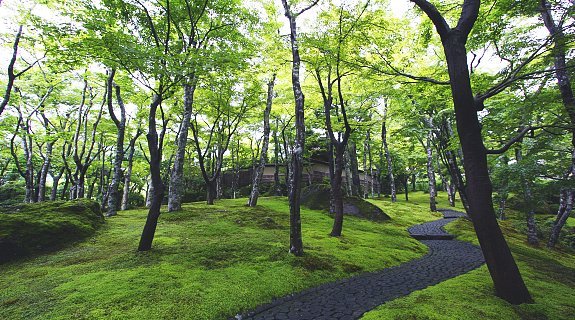
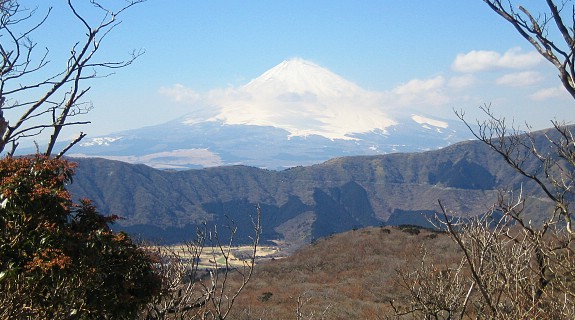






No comments:
Post a Comment